Search Results for 'Harbour Board'
10 results found.
How Galway lost the Clifden railway

It is probable that if the coastal route had been chosen for the Clifden railway, rather than the Oughterard/ Maam Cross way, the line would still be viable today. The idea of the so-called ‘Balfour lines’, proposed by an enlightened chief secretary for Ireland, Arthur J Balfour, and given the go-ahead in the 1889 Light Railways (Ireland) Act, was to give far-flung towns and communities access to bigger markets, and to grasp the benefits of employment and opportunities.
The extraordinary Fr Peter Daly walks on to the Galway Stage
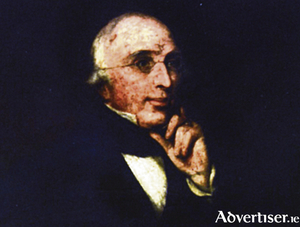
In the early decades of the 19th century fortunes were made in giving hundreds of thousands of emigrants safe passage to America. As the decades slipped by the numbers grew into millions. Liverpool had the main transatlantic business for these two islands, but Galway, situated some 300 miles closer to America, and with the onset of powerful steam-driven ships, believed that a better and quicker service could be provided.
Did a midsummer murder silence a guilty pilot?
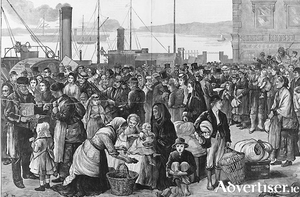
In June 1858 Galway town was in a fever of wild speculation and excitement. Its vision for a magnificent transatlantic port off Furbo, reaching deep into Galway Bay, where passengers from Britain, and throughout the island of Ireland, would be brought to their emigration ship in the comfort of a train, now faced being scuppered by the apparent criminal intent of the two local pilots.
Harbour Board should withdraw outdoor dining plans, says Cheevers
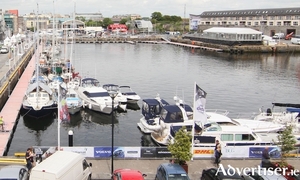
The Galway Harbour Board is being asked to withdraw its application to have outdoor dining in the harbour area of the city during the summer months.
Galway’s heroic attempt to get into the transatlantic business

Reading through William Henry’s comprehensive digest of the story of Galway * from its original foundation on the banks of the Corrib to the present day, I am reminded that there was an extraordinary burst of optimism and creative energy in the middle of the 19th century despite the ravages of the Great Famine barely a decade before.
Dealing with whatever the ocean sends
It is not surprising that any child with imagination, and an interest in the sea, would spend time at the city’s harbour watching the ships come and go, and the men who worked there as they talked and unloaded fish or cargo. As a child Kathleen Curran, once the home chores were done, would run down the back paths from her home on College Road and along Lough Atalia to the docks. ‘There she would stand and gaze in wonder at the ships, boats and trawlers, hookers and gleoteóigs tied up or coming and going about their business.’
The woman at the end of the table

Shortly before midnight on February 18 1946, the cargo ship The Moyalla steamed into Galway Bay. It was a foggy night. The Galway pilot, Coleman Flaherty was watching the approach of the ship from the bothareen at Barna waiting for the ship to signal for a pilot. Unusually she steamed along without requesting any.
The night Stephen Gwynn MP nearly lost his pants
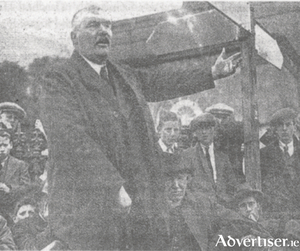
The outbreak of World War I brought to a head the divided camps among Irish nationalists, both of whom wanted Home Rule, or Independence, but both saw different ways to achieve it. Probably because of the large army presence in the town, and the natural benefits that the army brought to traders, as well as the family connections that had developed over the years between town and soldiers, the majority of people in Galway town favoured the British military approach.
Fr Peter Daly - ‘The warmest expression of our unbounded gratitude.’
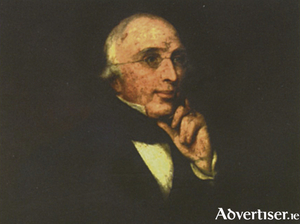
Described as a ‘turbulent priest’, and ‘the dominant public figure in Galway during the 1850s’, who was ‘a stubborn, abrasive, guileful and egotistical populist,’* Fr Peter Daly was the principle mover and shaker behind Galway’s drive to become the main transatlantic port for traffic to America in the 1850s. As chairman of both the Town Commissioners and the Harbour Board, he supported J O Lever’s Galway Line, which was to run three state-of-the-art steam-sailing ships between Galway and New York, from a grandiose harbour to be built off Furbo. Passengers from Britain, and all over Ireland, would be delivered to the terminal by train. It was to be the most comfortable, and shortest, route to America.
Did a midsummer murder silence a guilty pilot?
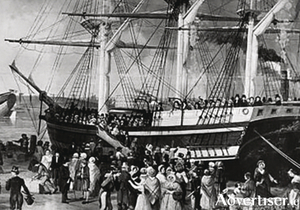
In June 1858 Galway town was in a fever of excitement. Its vision for a magnificent transatlantic port off Furbo, reaching deep into in Galway Bay, where passangers from Britain, and throughout the island of Ireland, would be brought to their emigration ship in the comfort of a train, could now be scuppered by the apparent carelessness of the two local pilots.

